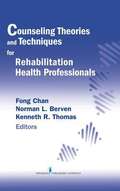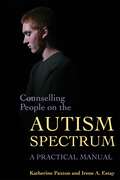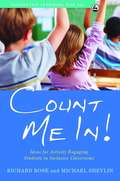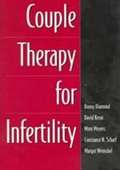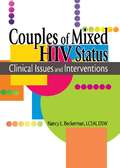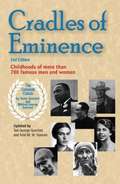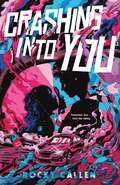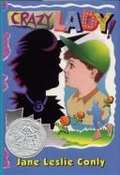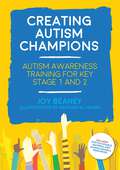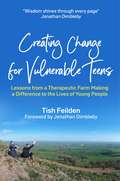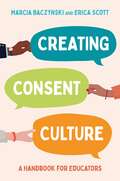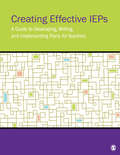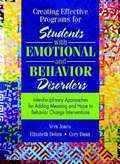- Table View
- List View
Counseling Theories and Techniques for Rehabilitation Health Professionals
by Fong Chan Norman L. Berven Kenneth R. ThomasForty-three American academics and practitioners discuss the dominant theories and techniques of counseling and psychotherapy from a rehabilitation perspective. Coverage includes reviews of ten psychodynamic, humanistic, and cognitive and behavioral approaches to counseling; basic techniques; considerations for specific types of disabilities; and professional issues. Each chapter includes a case example. Annotation ©2004 Book News, Inc., Portland, OR (booknews.com)
Counseling Theories and Techniques for Rehabilitation Health Professionals
by Fong Chan Norman L. Berven Kenneth R. ThomasForty-three American academics and practitioners discuss the dominant theories and techniques of counseling and psychotherapy from a rehabilitation perspective. Coverage includes reviews of ten psychodynamic, humanistic, and cognitive and behavioral approaches to counseling; basic techniques; considerations for specific types of disabilities; and professional issues. Each chapter includes a case example.
Counseling the Emotionally Disturbed
by C. H. PattersonMental disturbance is frighteningly prevalent in our contemporary society. The number of those mentally disturbed who are or have been hospitalized should seriously concern every citizen in our country-especially all those working in such fields as medicine, education, psychology, social work, the courts, and the church. The devastating disease of mental disturbance strikes all ages and all levels of ability. To the untutored observer this malady seems to come without warning, although to the skilled in this field there are clearly identifiable danger signs that appear long before the popularly termed "nervous breakdown." Fortunately, there is widespread and telling evidence of the recognition of this situation in many directions. The necessity for effective counseling services for both young and old as a possible preventative against disastrous crack-ups is being considered and provided for by a wide array of institutions. Just as is true of any disease, mental disturbance demands treatment by personnel who are well grounded indeed in the nature and treatment of diseases of the mind. However, also just as is true of any disease, the highly skilled specialist must be bulwarked by many specialists in related activities. For example, in the same fashion as teachers, nurses, and medical technicians have been taught to become alerted to the possible presence of such common ailments as measles, whooping cough, scarlet fever, and so forth, it seems clear that a similarly wide range of workers must learn to recognize the presence or prospect of mental disturbance. And just as nurses and medical technicians do the bidding of and gather data for the surgeon, so must the specialist direct and be aided by the effort of others. To the knowledge of the writer, this volume is a pioneer effort. He is not familiar with any work outside the literature especially prepared for psychiatric training that deals with the counseling of the mentally disturbed. This treatise is a combination of theory, research, and common sense, which the author has gleaned from a wide sampling of the work of others and to which he, himself, has made no small contribution.
Counselling People on the Autism Spectrum: A Practical Manual
by Katherine Paxton Irene EstayThe characteristics of autism spectrum disorders (ASD) present unique challenges, not only to people themselves affected, but also to counselling professionals. This manual provides counselling techniques that work not only for professionals, but also for individuals either coping with being on the spectrum themselves, or living with someone who has an ASD. Regardless of intellectual and linguistic ability, people on the autism spectrum often have significant impairments in emotional expression, regulation, and recognition, and they are known to have higher rates of depression and anxiety than the general population. This comprehensive book shows how to develop the tools necessary to help people on the spectrum cope with their emotions, anxieties, and confusion about the often overwhelming world that surrounds them. Illustrated with useful case studies, it covers a range situations where counselling may be helpful for individuals with ASD, both children and adults, families where a member is on the spectrum, and couples where a partner has ASD. It also addresses specific issues, including depression, anxiety, emotional regulation, social skills, and stress, with effective strategies for dealing with each issue. As well as being indispensable for counsellors, this book provides valuable information and advice for anyone working with people and families affected by ASDs.
Counter-cartographies: Neurodivergence and the Errancies of Performance
by Leon J. HiltonHow to remake the world with neurodivergence at its heart What if we embraced neurodivergent ways of being not as deviations to be corrected but as vital ways of inhabiting the world? What new realities might emerge? Bringing a much-needed humanistic perspective to the study of autism and other forms of neurodivergence, Counter-cartographies offers a bold reimagining of neurological difference, moving beyond rigid diagnostic frameworks to uncover more expansive, generative modes of existence. Engaging the work of Fernand Deligny to trace how modern taxonomies of neurodivergence have hardened over time, Leon J. Hilton questions how these categories might instead serve as tools for remapping the world with neurodivergence at its center. At the heart of Counter-cartographies is an exploration of performance and performativity that reveals how the norm of neurotypical reality is continually reinforced through acts of doing, redoing, and undoing. Charting the historical shift away from &“mind&” and toward &“brain&” and moving fluidly across disciplines—from digital art and documentary cinema to cybernetics and radical mental health movements—Hilton illuminates the deep interconnections between performance, perception, and the historical construction of the &“neurotypical.&” Through close readings of works by William Pope.L, Mel Baggs, Wu Tsang, and others, Hilton also examines how neurodivergence has been represented, embodied, and materialized in contemporary art and media. Restless, engrossing, and persistently attuned to moments of rupture when the neurotypical order falters, Counter-cartographies charts a path toward a more capacious, imaginative world. Retail e-book files for this title are screen-reader friendly with images accompanied by short alt text and/or extended descriptions.
Counterclockwise
by Mary Jane WardSusan Wood is the author of the novel Hideaway which was made into a popular movie; the novel was based on her experiences as a psychiatric patient in a state hospital. She is in great demand as a speaker on the conditions faced by the mentally ill, and she serves on the board of a mental health foundation. During a tour of a state hospital during one of her speaking engagements she visits the infamous Ward 10A and is swept into another breakdown. Finding herself hospitalized once more, this time in a private facility, she struggles to make sense of the world and get her life back on track. The story is enlivened by an assortment of fellow patients and an eccentric but determined nurse who deals cards counterclockwise.
Couple Therapy for Infertility
by Ronny Diamond David Kezur Mimi Meyers Constance N. Scharf Margot WeinshelExamines the experiences of couples who are unable to conceive children and looks at possibilities for them.
Couples of Mixed HIV Status: Clinical Issues and Interventions
by R Dennis Shelby Nancy L BeckermanExamine the unique emotional challenges and issues that face couples of mixed HIV status today!Previous books on this subject-mostly written in the days when HIV/AIDS was considered a fatal rather than a chronic disease-focused on end-of-life issues. However, Couples of Mixed HIV Status: Clinical Issues and Interventions addresses the unique emotional challenges facing today&’s couples of mixed HIV status and provides a conceptual framework for assessment and intervention. The book offers examples of how to apply emotionally focused couple therapy to help them work through issues including disclosure, the fear of HIV transmission, shifts in emotional intimacy, family planning, betrayal, mistrust, and uncertainty. This unique work, its knowledge base, and the interventions you'll find inside, are applicable to any practitioner who provides couple and family therapy-as well as any practitioner who counsels around issues of chronic illness. Couples of Mixed HIV Status provides therapists with a range of theoretical approaches to help mixed HIV status couples deal with their issues and concerns. It includes applications of couple therapy approaches that have proved to be particularly effective as well as case studies that demonstrate how different relationship variables may affect therapy. The book presents the findings of a research study involving 44 mixed HIV status couples in the Northeast and is generously illustrated with tables that make complex research results easy to access and understand.Topics covered in Couples of Mixed HIV Status include: various approaches to couples therapy the historical context of HIV/AIDS HIV transmission family planning and HIV/AIDS emotionally focused couple therapy disclosure issues attachment theory and much more!Couples of Mixed HIV Status: Clinical Issues and Interventions is a valuable resource for therapists and other mental health counselors working with today&’s couples of mixed HIV status as well as for students of counseling and health related services. Readers who may be in a mixed HIV status relationship or those who are friends and family members of couples living with HIV will also find this book helpful.
Cradles Of Eminence: Childhoods Of More Than Seven Hundred Famous Men And Women
by Victor Goertzel Mildred Goertzel Ted Goertzel Ariel HansenFascinating findings from Cradles of Eminence, 2nd Edition reveal that eminent adults, in their childhoods: strongly disliked school but had families who valued education; had highly opinionated parents often with a dominating mother; grew up "feeling different" from others. Readers are challenged to consider what factors will foster eminence in today's world of mass media and technological change. Book jacket.
Crashing into You
by Rocky CallenIn this fiercely moving YA romance novel, Leti Rivera's love of street racing is put to the test when tragedy strikes her family and threatens to tear her apart from the boy she's falling for.Seventeen-year-old Leti Rivera dreams of becoming a famous female street racer. Her brother taught her how to drive so fast that nothing can catch her.But when Jacob Fleckenstein crashes into her life, Leti starts to think that running isn’t always the answer. Together, inside her car, they both feel like they’re flying, and Jacob’s gentleness and honesty threaten Leti’s vow to keep her heart tight in her fist and her grief locked away.Yet after tragedy strikes following a race, Leti blames herself and swears an oath, a juramento, to give up driving. But will she be able to keep her promise when racing could be the very thing that saves Jacob . . . and herself? Perfect for fans of Netflix's Atypical and I Am Not Your Perfect Mexican Daughter.
Crazy Lady
by Jane Leslie ConlyReceiving less and less attention from his widowed father, Vernon joins with his friends as they ridicule the neighborhood outcasts--Maxine, an alcoholic prone to public displays of crazy behavior, and Ronald, her retarded son. Then the social service decides to put Ronald into a special home, and Vernon finds himself fighting the agency. 1994 Newbery Honor Book<P> Notable Children's Books of 1994 (ALA)<P> 1994 Best Books for Young Adults (ALA)<P> 1994 Young Adult Editors' Choices (BL)<P> 1994 Books for the Teen Age (NY Public Library)<P> Young Adult Choices for 1995 (IRA)<P>
Crazy: A Father's Search Through America's Mental Health Madness
by Pete EarleyFrom the Publisher: Pete Earley had no idea. He'd been a journalist for over thirty years, and the author of several award-winning-even bestselling-nonfiction books about crime and punishment and society. Yet he'd always been on the outside looking in. He had no idea what it was like to be on the inside looking out until his son, Mike, was declared mentally ill, and Earley was thrown headlong into the maze of contradictions, disparities, and catch-22s that is America's mental health system. The more Earley dug, the more he uncovered the bigger picture: Our nation's prisons have become our new mental hospitals. Crazy tells two stories. The first is his son's. The second describes what Earley learned during a yearlong investigation inside the Miami-Dade County jail, where he was given complete, unrestricted access. There, and in the surrounding community, he shadowed inmates and patients; interviewed correctional officers, public defenders, prosecutors, judges, mental-health professionals, and the police; talked with parents, siblings, and spouses; consulted historians, civil rights lawyers, and legislators. The result is both a remarkable piece of investigative journalism, and a wake-up call-a portrait that could serve as a snapshot of any community in America.
Creating Autism Champions: Autism Awareness Training for Key Stage 1 and 2
by Haitham Al-Ghani Joy BeaneyRaising awareness and understanding of autism has school-wide benefits, such as helping to improve the attitudes of pupils and staff and allowing children with autism to thrive socially, emotionally and educationally alongside their peers. This comprehensive resource provides a whole school programme for raising autism awareness and promoting inclusion. It includes training for staff in the knowledge and skills they need to support pupils, a sample school assembly, and lesson plans for teaching groups of pupils to be 'autism champions'. This programme also offers photocopiable worksheets and online presentations to use as part of the staff training, school assembly and peer awareness lessons. There is advice for involving children with autism and their parents in school activities. Easily adaptable for different age groups, this is a ready-made resource for schools committed to promoting autism awareness and whole school welfare.
Creating Change for Vulnerable Teens: Lessons from a Therapeutic Farm Making a Difference to the Lives of Young People
by Tish FeildenCreating Change for Vulnerable Teens tells the story of Tish Feilden and Jamie's Farm - a network of therapeutic farms dedicated to transforming the lives of disadvantaged children.Documenting Tish's experiences of working with truly remarkable teens who have faced huge challenges in their lives, the book describes how the farms help young people to thrive academically, socially and emotionally. She shares the approaches they have pioneered, including the critical importance of trust, of looking behind the behaviour and of really connecting with the desires and hopes of young people. If you have an interest in supporting vulnerable children or young people, this book provides a wealth of inspiration and ideas you can use, whatever the setting.
Creating Consent Culture: A Handbook for Educators
by Marcia Baczynski Erica ScottCan you imagine a world where no one feared a violation of their boundaries? A world where everyone felt safe in their bodies and confident in asking for what they wanted? Teaching consent education is the way to achieve this vision, and this entry level book for educators helps you teach and discuss consent issues to young adults, from 10+.The fun, interactive exercises in this book focus on consent in all interactions, not just sexual ones, and explores skills that help young people to increase their relational intelligence and build positive, reciprocal relationships.Drawing on their combined experiences of over 25 years as consent educators, the authors have seen that more respectful, generous and joyful ways of relating to one another are possible. In this vital book, they challenge common assumptions about consent and coercion, and invite educators of all walks to become instigators of a profound culture shift.
Creating Effective IEPs: A Guide to Developing, Writing, and Implementing Plans for Teachers
by Nancy BurtonCreating Effective IEPs: A Guide to Developing, Writing, and Implementing Plans for Teachers is a brief primer on Individualized Education Plans that has been developed as a custom supplement for textbooks in Introduction to Education, Introduction to Inclusion, and SPED Teaching Strategies. The Individualized Education Plan is one of the most important parts of an exceptional child’s education – it is the document shared among teachers, administrators, paraprofessionals and parents that outlines the accommodations and strategies for educating a child with special needs. An effective IEP must be well-thought out, clearly defined, and embraced by all parties involved in a child’s education, including administrators and parents. This primer provides practical instruction for writing IEPs, leading IEP meetings, and implementing the goals in a classroom setting. Practical exercises and real-world appendices help make the material accessible for students preparing to enter the workforce.
Creating Effective IEPs: A Guide to Developing, Writing, and Implementing Plans for Teachers
by Nancy BurtonCreating Effective IEPs: A Guide to Developing, Writing, and Implementing Plans for Teachers is a brief primer on Individualized Education Plans that has been developed as a custom supplement for textbooks in Introduction to Education, Introduction to Inclusion, and SPED Teaching Strategies. The Individualized Education Plan is one of the most important parts of an exceptional child’s education – it is the document shared among teachers, administrators, paraprofessionals and parents that outlines the accommodations and strategies for educating a child with special needs. An effective IEP must be well-thought out, clearly defined, and embraced by all parties involved in a child’s education, including administrators and parents. This primer provides practical instruction for writing IEPs, leading IEP meetings, and implementing the goals in a classroom setting. Practical exercises and real-world appendices help make the material accessible for students preparing to enter the workforce.
Creating Effective Programs for Students with Emotional and Behavior Disorders
by Cory Dunn Elizabeth Dohrn Vern JonesThis exiting new book provides special educators, school psychologists, and others responsible for programs for students serving students with EBD with specific methods, supported by sound research and proven by practice, for developing or improving services to this student population. While several current books provide excellent discussions concerning characteristics of students with EBD and describe some methods that have been effective in helping these students improve their behavior, this is the only book to provide a thorough, comprehensive examination of concepts and strategies needed to effectively develop and implement a program for this student population. special educators, school psychologists, therapists.
Creating Equitable Practices in PBIS: Growing a Positive School Climate for Sustainable Outcomes
by Timothy J. Runge Nikole Y. Hollins-Sims Erica J. KaurudarThis go-to resource guides educators on how to incorporate equitable practices in a PBIS framework. The authors cover core concepts including school-wide positive behavioral interventions and supports (SWPBIS) and multi-tiered system of supports (MTSS), define equity, and present methods for enhancing implementation practices through an equity mindset. Chapters also include an analysis of team structures and the evaluation of baseline data sources, walking readers through how to incorporate effective practices to support an integrated MTSS framework and produce sustainable outcomes. This book is ideal for educators, behavioral specialists, and administrators who wish to promote a positive school climate and purposeful educational relationships.
Creating Inclusive Classrooms: Effective, Differentiated, and Reflective Practices (Eighth Edition)
by Spencer J. SalendCreating effective inclusive classrooms means understanding the role of education in a democratic society and federal legislation, as well as aligning your instruction with national and state standards. But the practical, up-to-date and digital eighth edition of Creating Inclusive Classrooms: Effective, Differentiated and Reflective Practices recognizes that it means more than that. It means using current research related to effective practices in curriculum, instruction, technology, assessment, classroom management, collaboration, and family involvement to foster the learning of all of your students. It means being an evidence-based and reflective educator who continually collects and analyzes evidence to document and enhance the effectiveness of your professional practices, and who thinks critically about your own values and beliefs so you can better differentiate your instruction and promote the learning of all of your students. It means being sensitive and responsive to diversity and individual differences, and collaborating with your students and their families and other educators to create the most successful educational experience for all of your students.
Creating Inclusive Learning Environments for Young Children: What to Do on Monday Morning
by Dr Clarissa WillisThis book provides information on common disabilities and practical strategies for creating inclusive environments and building student relationships.
Creating Multi-sensory Environments: Practical Ideas for Teaching and Learning (nasen spotlight)
by Christopher DaviesThe revised edition of this highly practical guide to creating and using multi-sensory environments is packed full of ideas for low-cost, easy to assemble multi-sensory environments suitable for children of varying ages and abilities. Each creative learning environment is designed to be constructed in a classroom or school hall, encouraging creative thinking and learning, and development of social and emotional skills. Each environment idea is accompanied by suggestions for use for children with special educational needs. Key features of the revised edition include: Ideas for creating sensory experiences that stimulate all the sensory channels – auditory, visual, kinaesthetic, olfactory and gustatory Suggestions for extension or differentiation depending on student capability or time available A summary of the theory and background to multi-sensory learning, to allow you to adapt the suggested scenarios according to the needs of individual learners Although these activities will be of particular value for children with special educational needs or sensory impairments, they are more broadly designed to provide stimulating learning environments, as promoted in the themes and principles of the Early Years Foundation Stage Guidance. This is an invaluable resource for teachers and other professionals in education.
Creating Our Own Lives: College Students with Intellectual Disability
by Michael Gill Beth MyersYoung adults with intellectual disability tell the story of their own experience of higher education How do students with intellectual disability experience higher education? Creating Our Own Lives addresses this question through the eyes of participants themselves. In relating their experiences and aspirations, these student perspectives mount a powerful challenge to assumptions that intellectual disability is best met with protection or segregation. Taken together, the essays expose and contradict the inherently ableist claim that individuals with intellectual disability cannot be reliable storytellers. Instead, their deeply informative stories serve as a corrective narrative. The first of the four sections, &“Laying the Foundation: Why Everyone Belongs in College,&” focuses on belonging and inclusion; the second, &“Opening Up Possibilities: Overcoming Doubt and Uncertainty,&” conveys the optimism of this generation of advocates through stories of personal hardship, hopeful perseverance, and triumph over adversity; the third, &“Inclusion as Action: Diversifying Student Experiences,&” supports the understanding of diverse student experiences in inclusive higher education; and the fourth, &“Supporting Growth: Peer Mentoring and Advice,&” offers guidance to those reimagining and creating educational spaces. Students with disabilities belong in higher education. Not only does this book serve as an important record of students enrolled in inclusive higher education programs, it is also an unprecedented resource, packed with information and inspiration both for parents seeking opportunities for their children and for individuals with intellectual disability who aspire to attend college. Contributors: Makayla Adkins, Olivia Baist, Brandon Baldwin, George Barham, Marquavious Barnes, Katie Bartlett, Steven Brief, De'Onte Brown, Meghan Brozaitis, Mary Bryant, Gracie Carrol, Taylor Cathey, Maia Chamberlain, Antonio E. Contreras, Kim Dean, Elizabeth Droessler, Katie Ducett, Keiron Dyck, Rachel Gomez, Deriq Graves, Micah Gray, Maggie Guillaume, Cleo Hamilton, Nathan Heald, Joshua R. Hourigan, Hannah Lenae Humes, Courtney Jorgensen, Eilish Kelderman, Kailin Kelderman, Kenneth Kelty, Kaelan Knowles, Karlee Lambert, Kate Lisotta, Rachel Mast, Elise McDaniel, Emma Miller, Jake Miller, Lydia Newnum, Brenna Mantz Nielsen, Carly O&’Connell, Nadia Osbey, Stirling Peebles, Breyan Pettaway, Amanda Pilkenton, True Rafferty, Taylor Ruppe, Lawrence Sapp, Tyler Shore, Brianna Silva, Alex Smith, Elliott Smith, Phillandra Smith, Payton Storms, Allen Thomas, Kylie Walter, Stephen Wanser, Sayid Webb, Breana Whittlesey, Luke Wilcox, Adam Wolfond.
Creating Sensory Smart Classrooms: A Practical Guide for Educators
by Ashley Taylor Jamie ChavesCreating Sensory Smart Classrooms introduces educators to the foundations of sensory processing and offers tools to meet the wide variety of sensory needs in each classroom. This comprehensive handbook helps readers understand the neurobiology behind sensory processing and regulation issues, recognize when a student is over- or under-stimulated, and integrate different sensory inputs into the school environment. Practical and accessible chapters foster an understanding of how sensory processing influences behaviors in the classroom and how protective relationships, combined with sensory strategies, positively influence students' regulation for improved learning outcomes. Packed with useful examples, this is essential reading for teachers looking to develop the knowledge and skills they need to design sensory smart environments that support ALL learners.
